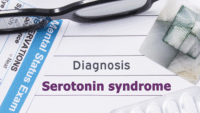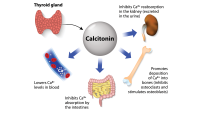A quick response leads to a good outcome.
- Preeclampsia is a leading cause of preventable maternal morbidity and mortality in the United States.
- Patients also are at an increased risk for diabetes, hypertension, heart disease, and cerebrovascular disease later in life.
- Early identification of pregnant patients with risk factors for preeclampsia or those with early manifestations of hypertensive disorders of pregnancy can improve pregnancy and neonatal outcomes.
- Preeclampsia with severe features is treated with magnesium sulfate, a central nervous system depressant, as seizure prophylaxis.
Sonja Birkland*, a 28-year-old woman, arrives at the obstetrics emergency department with abdominal pain. She’s 8 months pregnant and hasn’t received prenatal care. Ms. Birkland has had two prior full-term pregnancies and has two living children. Her medical history includes obesity and polycystic ovarian syndrome.
History and assessment
In triage, Brenda, an experienced labor and delivery nurse, places external fetal and contraction monitors on Ms. Birkland’s abdomen. The initial FHR is 130 bpm with minimal variability. Brenda notes a soft abdomen when she palpates Ms. Birkland. She reports right-side upper abdominal pain, a progressively worsening headache for the past 3 days, blurry vision, dizziness, and seeing spots. During her second pregnancy, Ms. Birkland was induced for high blood pressure, and the baby was admitted to the NICU for “being small.”
Cesarean birth reduction: EBP in action
Critically ill obstetric patients
Brenda completes a physical assessment and notes bilateral patellar deep tendon reflexes of 4+ and 3 beats of clonus in both ankles, lower extremity pitting edema, and periorbital edema. The fetal heart tracing shows a normal FHR baseline of 140 bpm with minimal variability. Ms. Birkland’s vital signs are temperature 97.5° F (36.4° C), HR 95 BPM, RR 20 breaths per minute, BP 215/108 mmHg, and SaO2 96% on room air.
Brenda notifies her charge nurse and the on-call provider about the patient’s severe-range BP and physical examination findings, requesting their immediate presence. As she turns from updating the EHR, she finds Ms. Birkland convulsing. Brenda presses the code button, lowers the head of the bed, turns the patient to her left side, ensures an open airway, and places a non-rebreather oxygen mask at 10 liters.
On the scene
Additional nurses and the provider arrive quickly. A nurse places pillows next to the side rails to protect Ms. Birkland from injury, monitors her airway, and ensures available suction. The provider orders a STAT 6-gram I.V. loading dose of magnesium sulfate administered over 20 minutes (1 g/25 mL concentration) and labetalol 20 mg I.V. push.
When the seizure stops after 3 minutes, Brenda starts the I.V. in the patient’s left forearm and initiates the magnesium sulfate loading dose. She notes that the FHR tracing has a baseline of 110 bpm with minimal-to-absent variability and recurrent late decelerations. Lab results include elevated liver enzymes and protein–creatine ratio.
The team prepares for an urgent cesarean delivery. The baby is born 12 minutes later and transferred to the NICU. His Apgar score is 5 at 1 minute and 8 at 5 minutes. He weighs 3 pounds, 5 ounces and the NICU team estimates his gestational age at 36 weeks.
Education
Preeclampsia, a multisystem disease process unique to pregnancy and the postpartum period, results in systemic endothelial dysfunction. It’s a leading cause of preventable maternal morbidity and mortality in the United States and increases the risk for organ damage, preterm birth, fetal demise, stroke, and death. Patients with preeclampsia are at increased risk for diabetes, hypertension, heart disease, and cerebrovascular disease later in life. (See Preeclampsia treatment)
Preeclampsia treatment
Early identification of pregnant patients with risk factors for preeclampsia (prior preeclampsia, chronic hypertension, pregestational diabetes, maternal BMI >30 kg/m2, antiphospholipid syndrome, and assisted reproduction) and those with early manifestations of hypertensive disorders of pregnancy can improve pregnancy and neonatal outcomes.
Several expert perinatal organizations (California Maternal Quality Care Collaborative, American College of Obstetricians and Gynecologists, Society of Obstetricians and Gynaecologists of Canada) recommend magnesium sulfate to both prevent and treat seizures in patients with preeclampsia (with severe features) and eclampsia (the seizures that occur as a result of preeclampsia). An I.V. 4-g loading dose (6 g for BMI >35) is recommended over 20 to 30 minutes, followed by a 1- to 2-g/hour maintenance infusion. If the patient has recurrent seizures, a second loading dose (2 to 4 g) of magnesium sulfate is administered over 5 minutes, followed by midazolam or phenytoin if the second loading dose isn’t effective. A dosage range for magnesium sulfate serves as a guideline; hospital policy or provider order determine specific dosages.
To prevent stroke in patients with sustained severe-range blood pressure (systolic BP ≥160 mmHg and/or diastolic BP ≥110 mmHg), a provider also will order an antihypertensive medication such as labetalol or hydralazine. If magnesium sulfate isn’t available for treating seizures (for example, in an emergency department or outpatient setting), an antiseizure medication is acceptable.
Outcome
After delivering the baby, Ms. Birkland is transferred to the ICU, where she remains on 2 g/hr of I.V. magnesium sulfate for 48 hours. She has no recurrent seizures, and her blood pressure stabilizes 4 days after delivery while on an oral antihypertensive regimen. Head imaging reveals no abnormalities. Ms. Birkland is discharged home 5 days after delivery, and her baby is discharged home at 3-weeks old.
*Names are fictitious.
Aly Willard is an assistant professor at Washington State University in Spokane.
American Nurse Journal. 2024; 19(10). Doi: 10.51256/ANJ102422
References
American College of Obstetricians and Gynecologists. Gestational hypertension and preeclampsia: ACOG practice bulletin, number 222. Obstet Gynecol. 2020;135(6):e237-60. doi:10.1097/AOG.0000000000003891
California Maternal Quality Care Collaborative. Improving health care response to hypertensive disorders of pregnancy. November 16, 2021. cmqcc.org/resource/improving-health-care-response-hypertensive-disorders-pregnancy
Norwitz E. Eclampsia. UpToDate. February 5, 2024. bit.ly/3SG0Lj2
Key words: preeclampsia, eclampsia, seizure, pregnancy



















1 Comment. Leave new
Thank you for great articles and work that is put into them